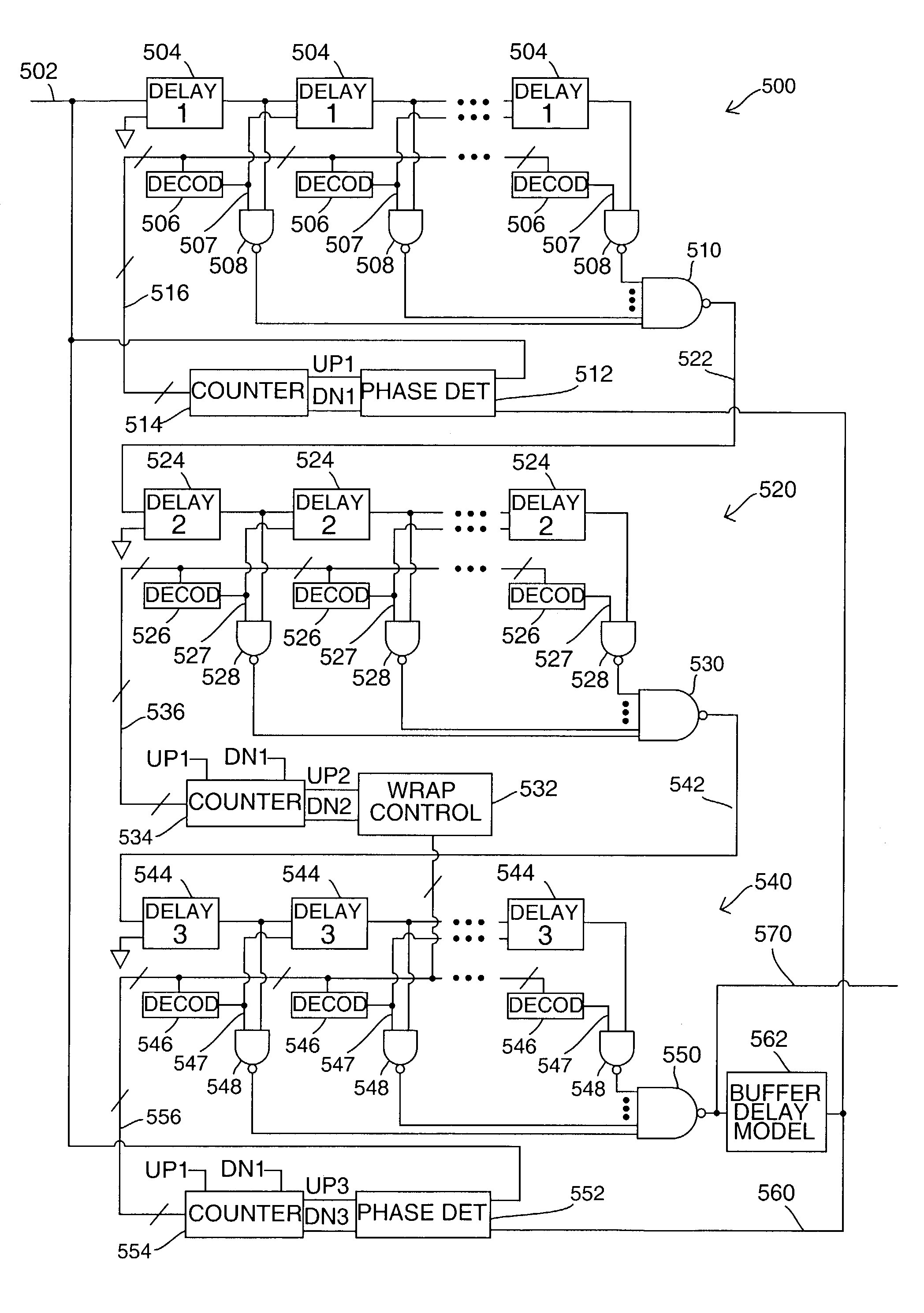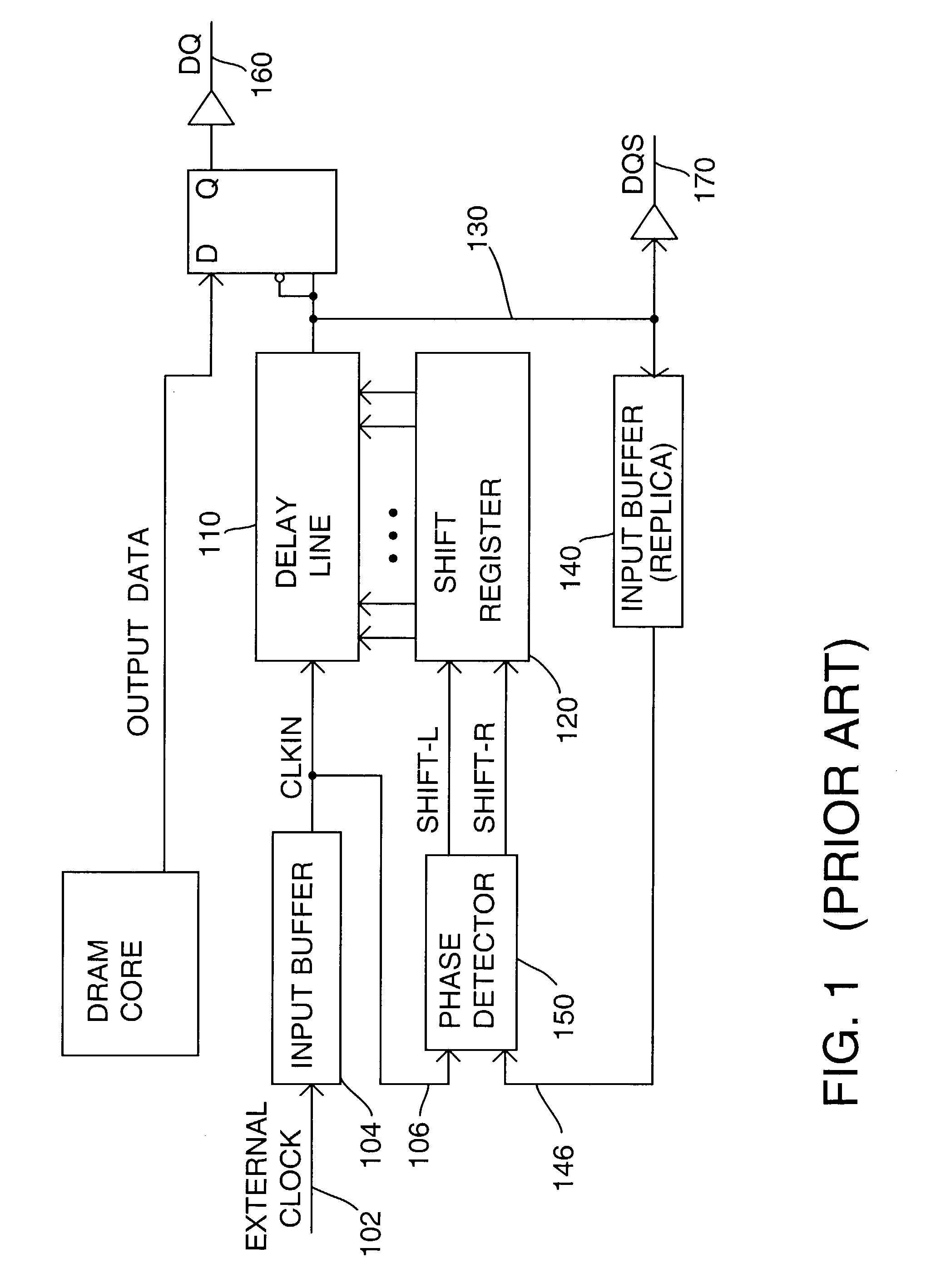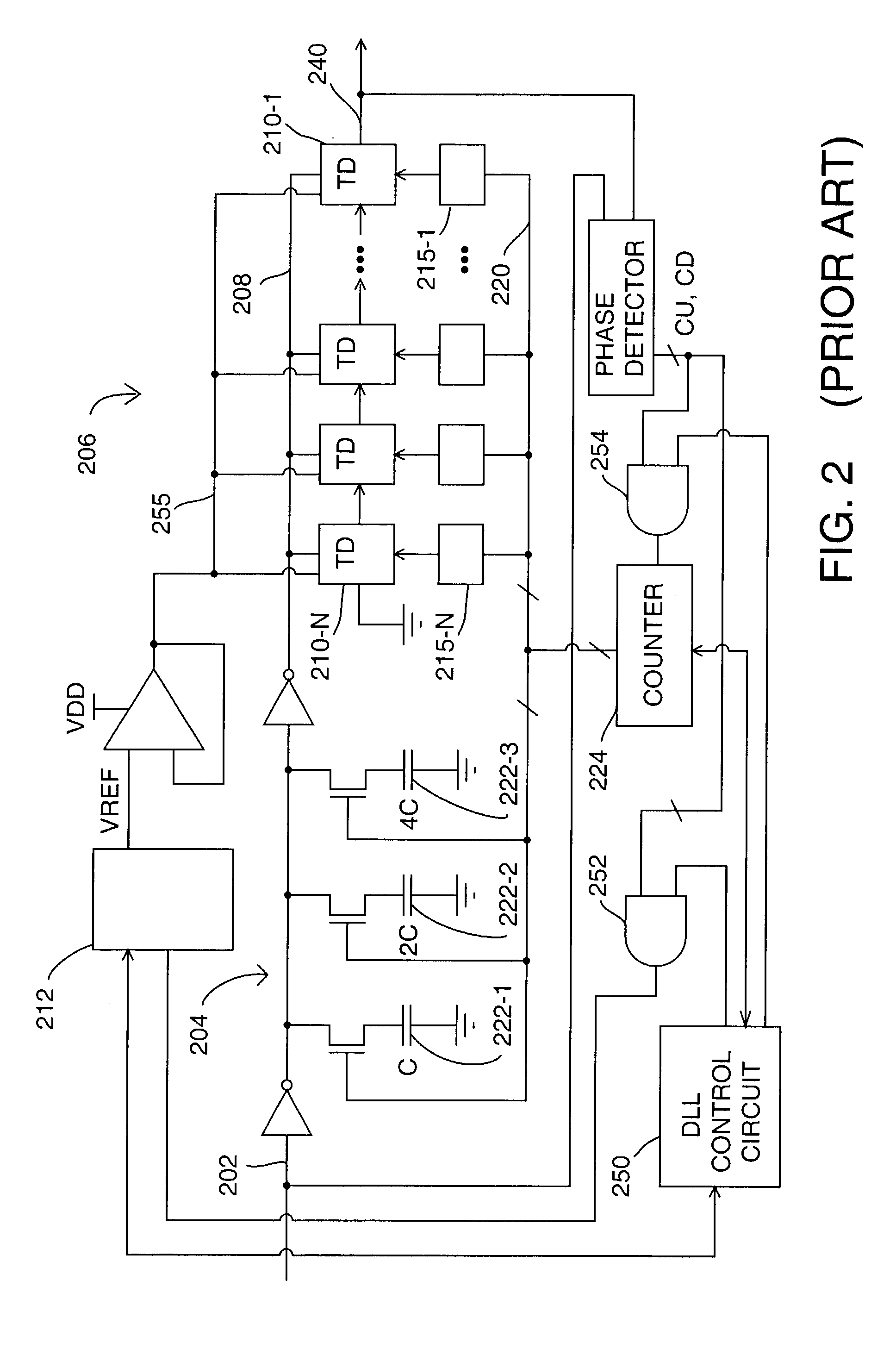Circuit and method for generating a local clock signal synchronized to an externally generated reference clock signal
a local clock signal and reference clock technology, applied in the direction of generating/distributing signals, digital transmission, instruments, etc., can solve the problems of design which loses locks, dq line drivers with significant delays, etc., to achieve the effect of increasing the available range of locks, and reducing the size of the layou
- Summary
- Abstract
- Description
- Claims
- Application Information
AI Technical Summary
Benefits of technology
Problems solved by technology
Method used
Image
Examples
Embodiment Construction
[0047]In FIG. 3, a buffered reference clock 302 is the input signal. For brevity, FIG. 3 does not show the reference clock input buffer. Buffered reference clock 302 connects to a first delay element in first delay line 300, to a first input of phase detector 312 in delay line 300, and to a first input of phase detector 332 in delay line 320. DQ clock 350 is the output signal from the DLL. DQ clock is driven by delay line 320, and connects further to buffer delay model 342. A replica clock signal 340, driven by the buffer delay model, is the feedback control signal for the loop. The replica clock connects to a second input of phase detector 312, and to a second input of phase detector 332.
[0048]In FIG. 3 delay line 300, the clock signal passes through delay elements 304 in series. Each delay element has an input node for receiving a clock signal, and an output node for conveying a copy of the clock signal delayed by a first delay time. The input node of each delay element in the del...
PUM
 Login to View More
Login to View More Abstract
Description
Claims
Application Information
 Login to View More
Login to View More - R&D
- Intellectual Property
- Life Sciences
- Materials
- Tech Scout
- Unparalleled Data Quality
- Higher Quality Content
- 60% Fewer Hallucinations
Browse by: Latest US Patents, China's latest patents, Technical Efficacy Thesaurus, Application Domain, Technology Topic, Popular Technical Reports.
© 2025 PatSnap. All rights reserved.Legal|Privacy policy|Modern Slavery Act Transparency Statement|Sitemap|About US| Contact US: help@patsnap.com



